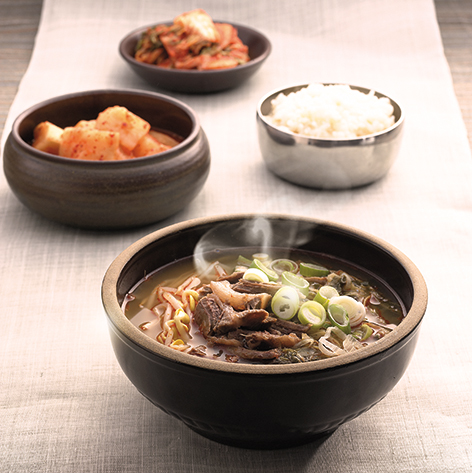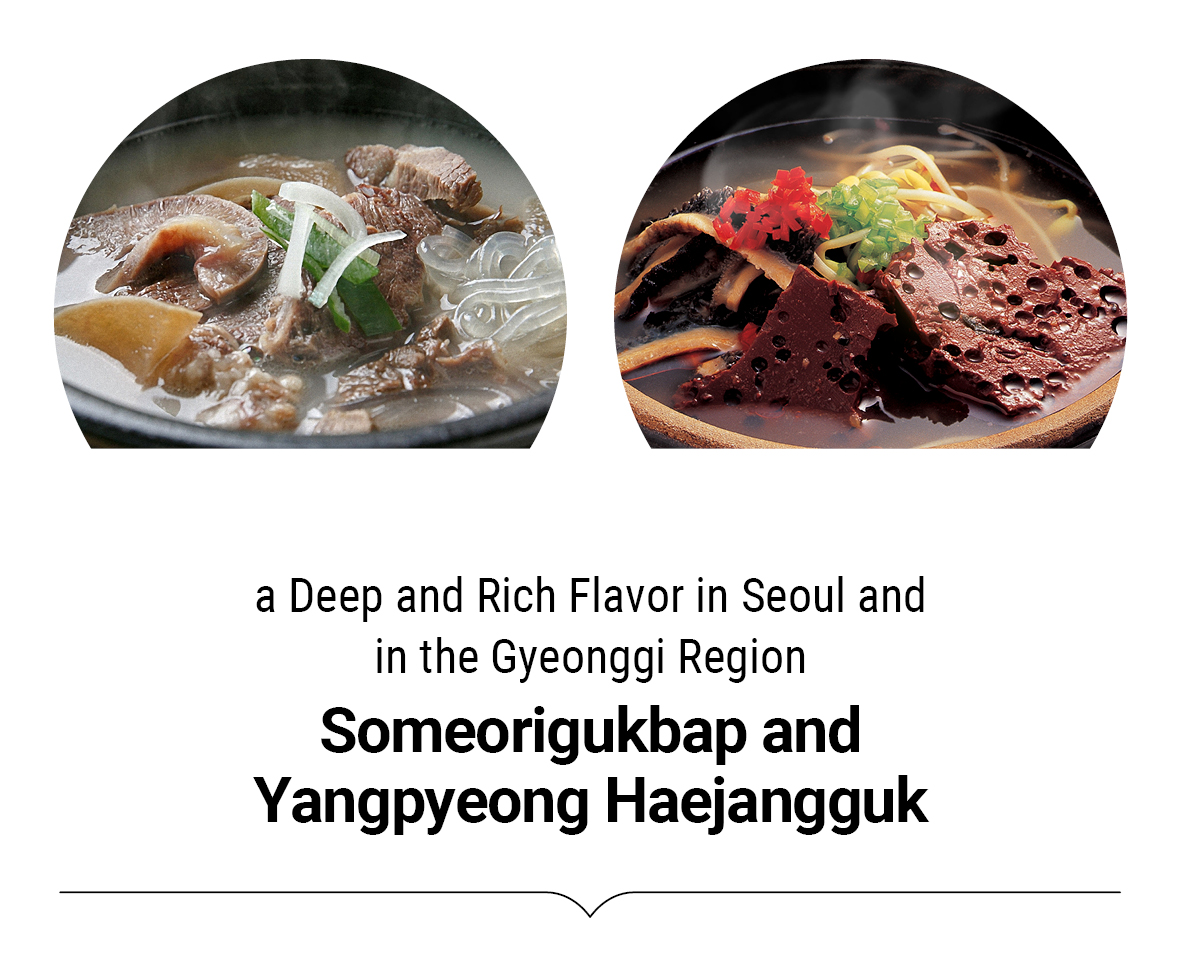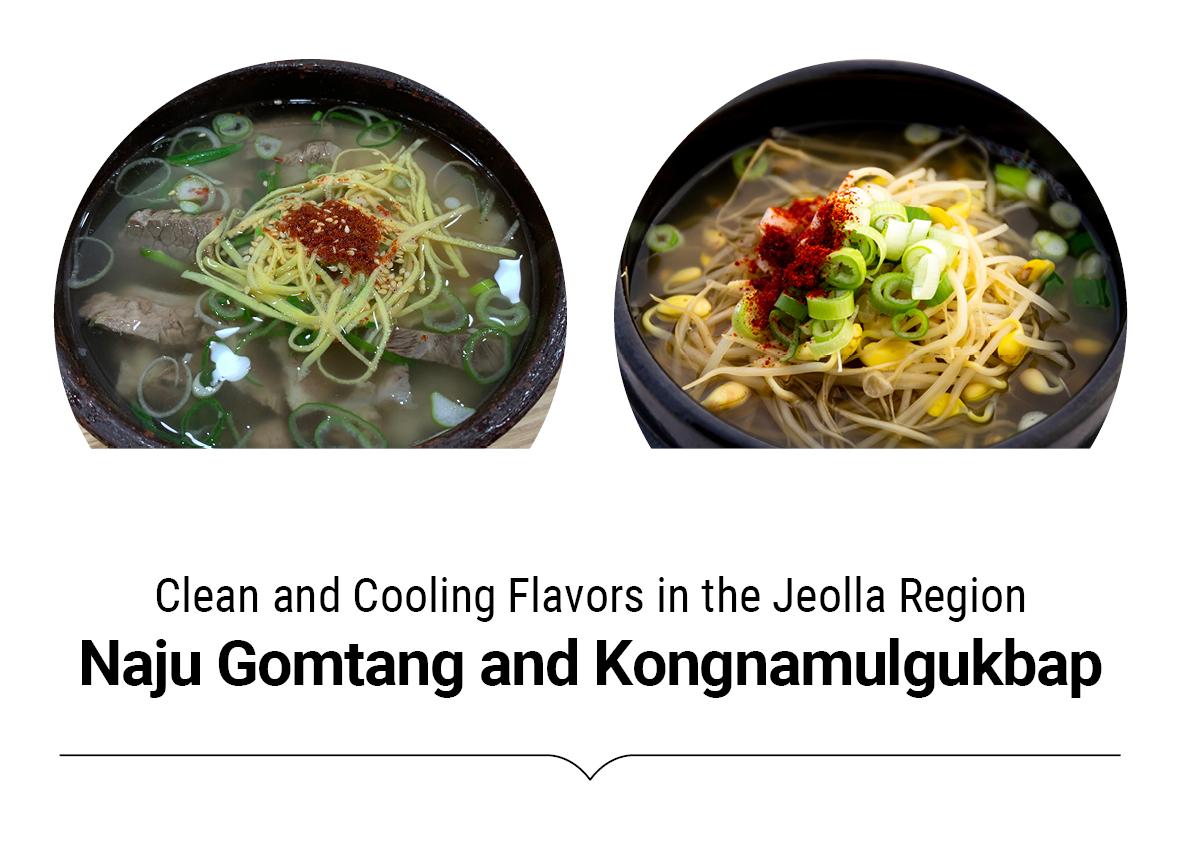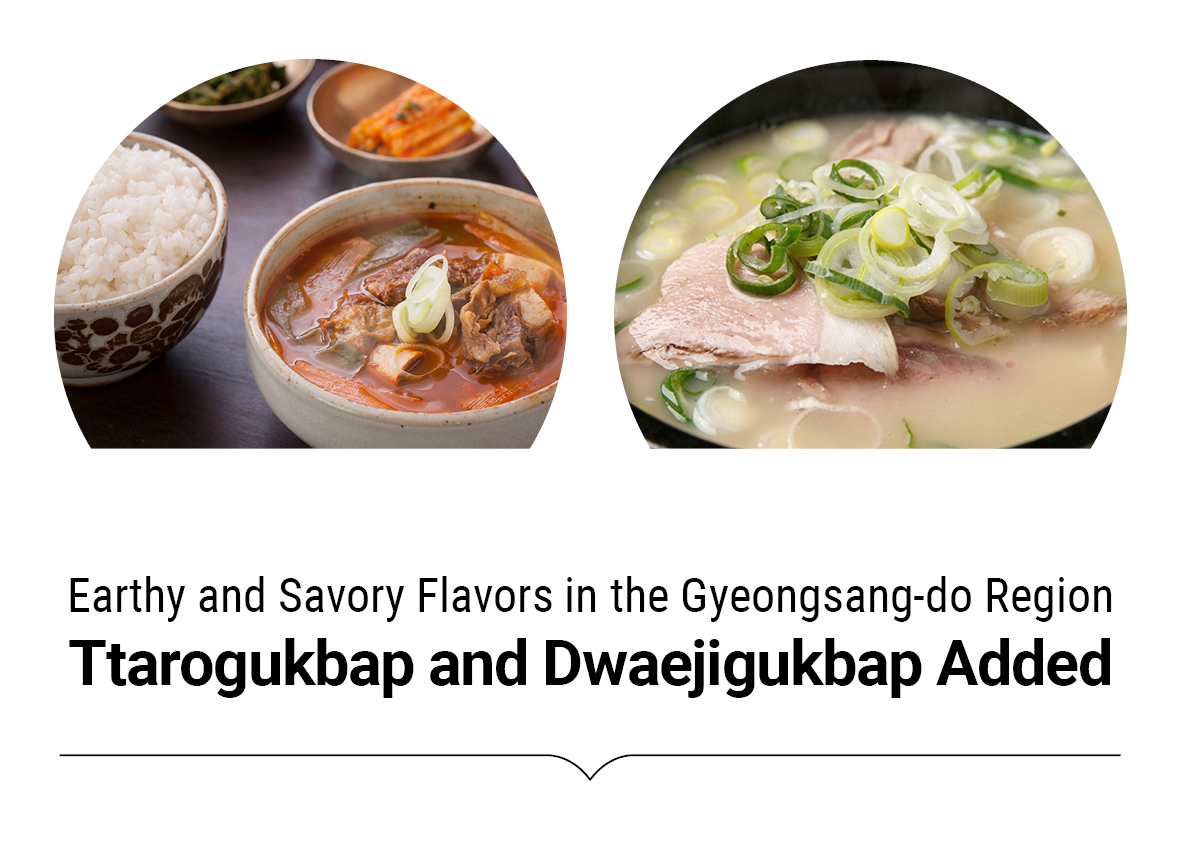한식 읽기 좋은 날
Vol 45. Gukbap, the Epitome of
A Bowl of Warmth that Appeases Your Hunger and Warms You Up Gukbap with Local Flavor
Joy of Gukbap
In our table setting, it is common to serve soup and rice separately. However, gukbap (rice soup) is a dish that serves rice in the soup, breaking from convention. Gukbap, which could be eaten by sharing a table with people at the entrance of the market, was usually a take-out food for ordinary people, thus appeasing both cold and hunger at an affordable price.

As the five-day market settled across the country, gukbap spread along with jumak(tavern), and began to take on the individuality that represented the taste and the food culture of the region. Food comes with a certain market power that if a dish becomes famous in one region, it can be found in other places over time. However, gukbap has such an indigenous flavor that can only be tasted within the region.

Someorigukbap(beef head meat and rice soup) and Yangpyeong haejangguk(hangover soup) are commonly cited as gukbap, representing Seoul and the Gyeonggi region. The fortress wall of Seoul during the Joseon Dynasty was an area with the highest demand of beef due to the consumption of the upper-class nobility. Thus, there were many slaughterhouses and tangbanga(a store that sells rice together with the soup) selling gukbap by using a variety of by-products from the slaughterhouses. In the early days, tangbangas sold many someorigukbap, which were made by boiling the beef head meat, beef bones, skins, and beef legs in a cauldron for a long time. The dish, seasoned with soy sauce and red chili powder, was a one-bowl meal that was hearty and filling with no need for any particular side dish.
Yangpyeong, Gyeonggi-do, has been famous for hanwoo(Korean beef) since the Joseon Dynasty. Haejangguk(hangover soup) was made of beef intestines and blood, and was also famous for its taste, making it popular in Hanyang(known as Seoul during the Joseon Dynasty). The flavor of Yangpyeong haejangguk is made with spicy red chili oil and red chili seeds, and its deep and refreshing taste is a result of putting together the beef blood, various intestines, bean sprouts, and ugeoji(kimchi cabbage leaves).

When we think of Jeolla-do gukbap, both Naju gomtang(beef soup) with a clear soup and kongnamulgukbap(bean sprout and rice soup) with a cooling taste come to mind. Gomtang is made by mixing rice in gomguk(gomtang), and by boiling the beef shank and brisket together with the broth boiled for a day with the beef bone, green onion roots, onion, and garlic. Naju gomtang, which is a local dish of Naju, Jeollanam-do, was a gukbap dish that merchants and common people used to eat at five-day markets in Naju, and the practice continues to this day.
If Jeollanam-do has Naju gomtang, Jeollabuk-do has kongnamulgukbap based on Jeonju. Jeonju is famous for its clear waters and exceptionally delicious bean sprouts. So, bean sprouts, a specialty product, are always included in Jeonju bibimbap. The dish, called kongnamulgukbap, exhibits the true value of bean sprouts, particularly its cooling texture. When a bowl that is half-filled with boiled bean sprouts and its broth is again boiled with rice, and then served after seasoning it with red chili powder and sesame salt, you can also mix in an egg, and season it with salted shrimp juice. In the Nambu Market in Jeonju, a different version is served by pouring a hot broth over a bowl filled with rice, and serving it with a poached egg in a separate dish, instead of boiling it with rice in a bowl together.

Ttarogukbap(rice and soup) and dwaejigukbap(pork and rice soup) are common gukbap dishes that you can have in the Gyeongsang-do region. In the Gyeongsangbuk-do region, a broth is boiled with the beef bones and knee cartilages first, and then boiled again with beef meat and served separately after seasoning it with red chili powder and sliced boiled beef on top with a bowl of rice. The name ttaro(separate) gukbap comes from this serving style. It is said that the soup is served separately with the rice because the rice served in the soup spoils the flavor of the soup. If you have a spoon of soup before mixing in rice, you can taste the savory spicy and thick soup.
In the Gyeongsangnam-do region, including Busan, dwaejigukbap, a rich soup made by boiling the pork bones, mixing in boiled pork meat, and serving with the rice in it, is famous. This type of gukbap is known to have originated from the refugees during the Korean War, making seolleongtang(ox bone soup) with pork by-products that were relatively easier to get. Dwaejigukbap is divided again into the Daegu style, which is adding plenty of spices and intestines, the Milyang style, with a milky broth like seolleongtang, and the Busan style, with a clear soup like gomtang. The unique aroma of the pork broth has a different charm from sogogigukbap(beef and rice soup).










